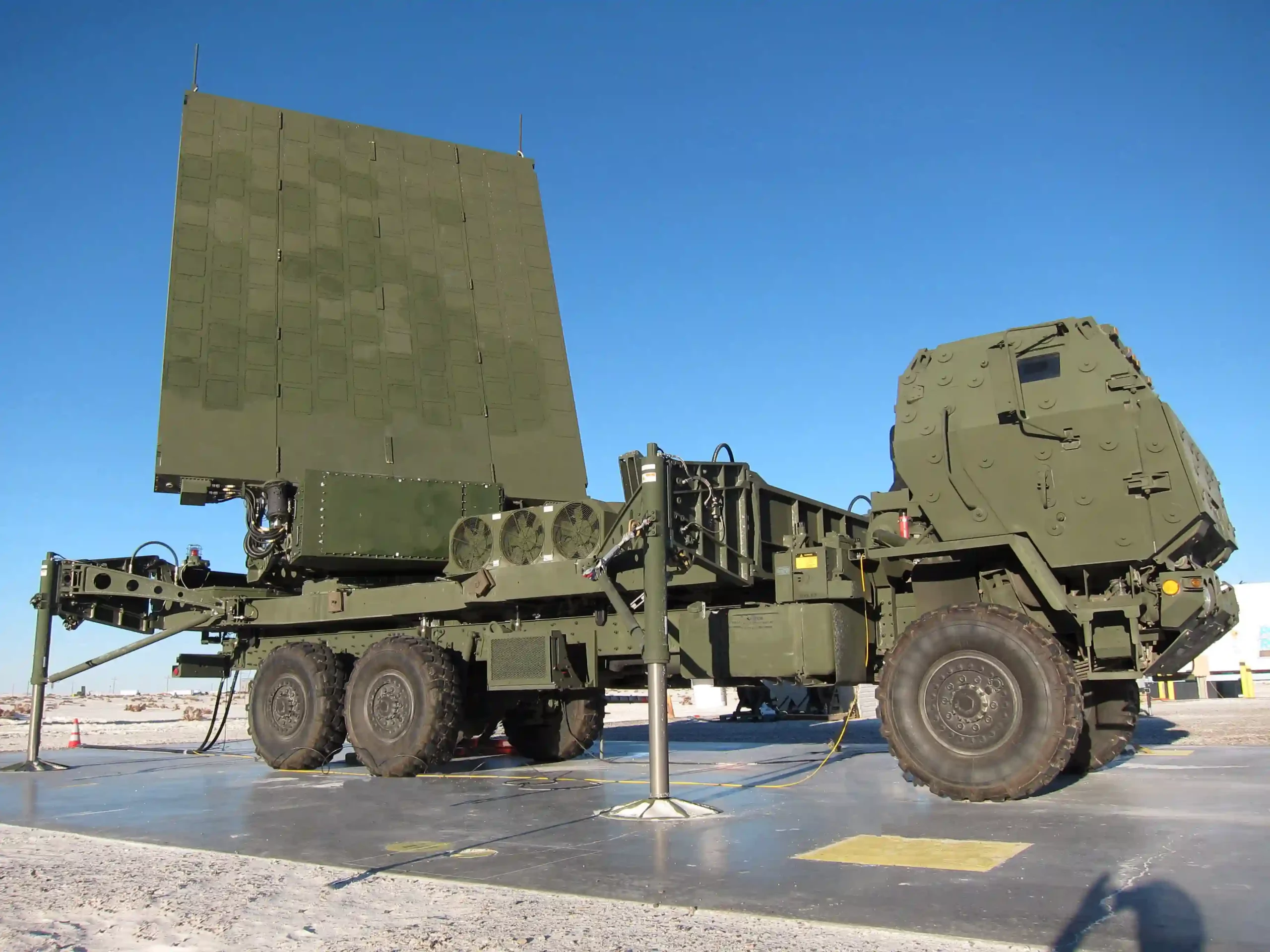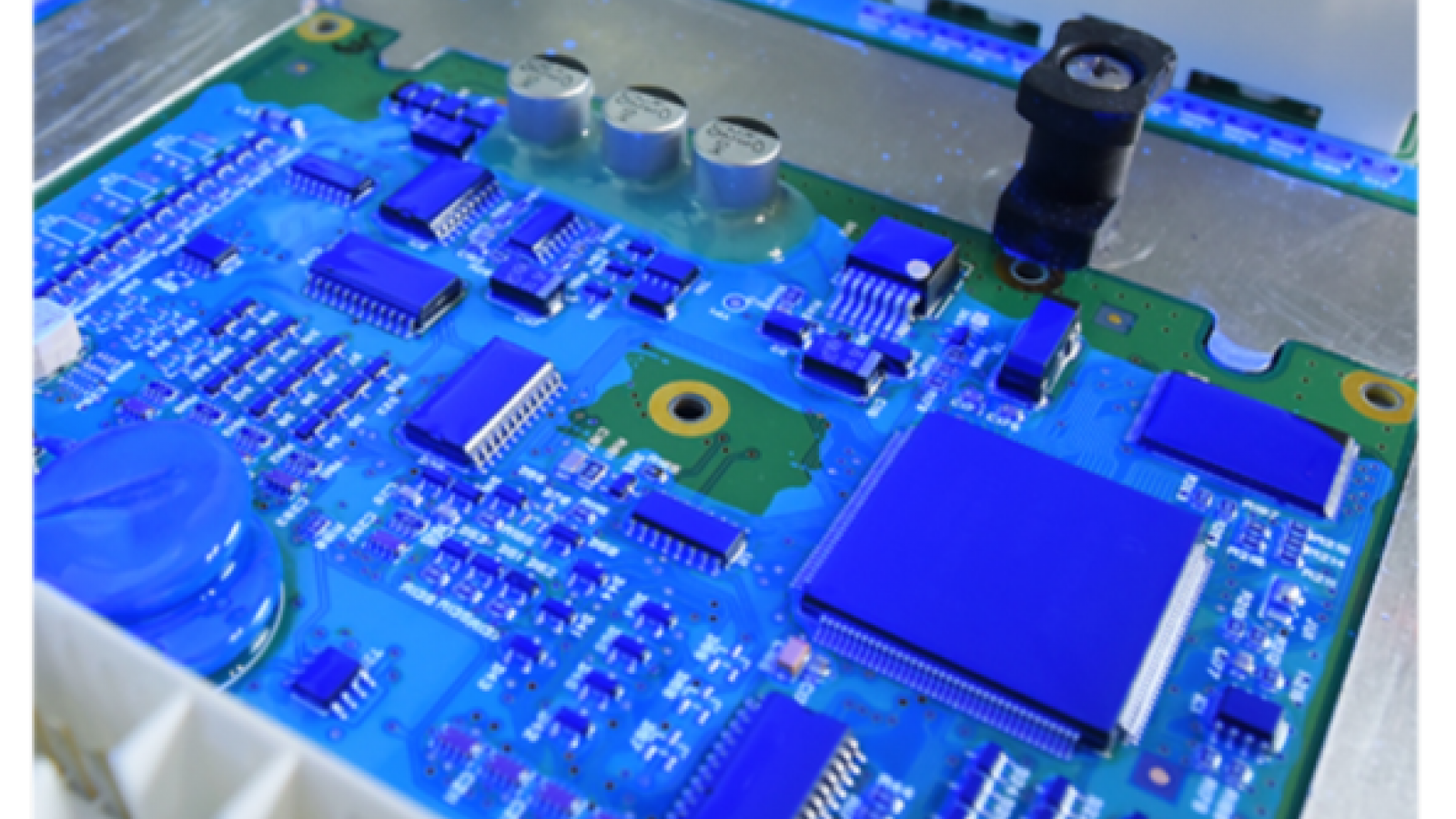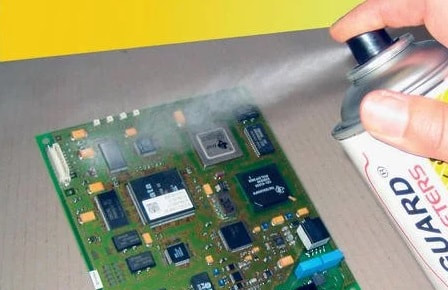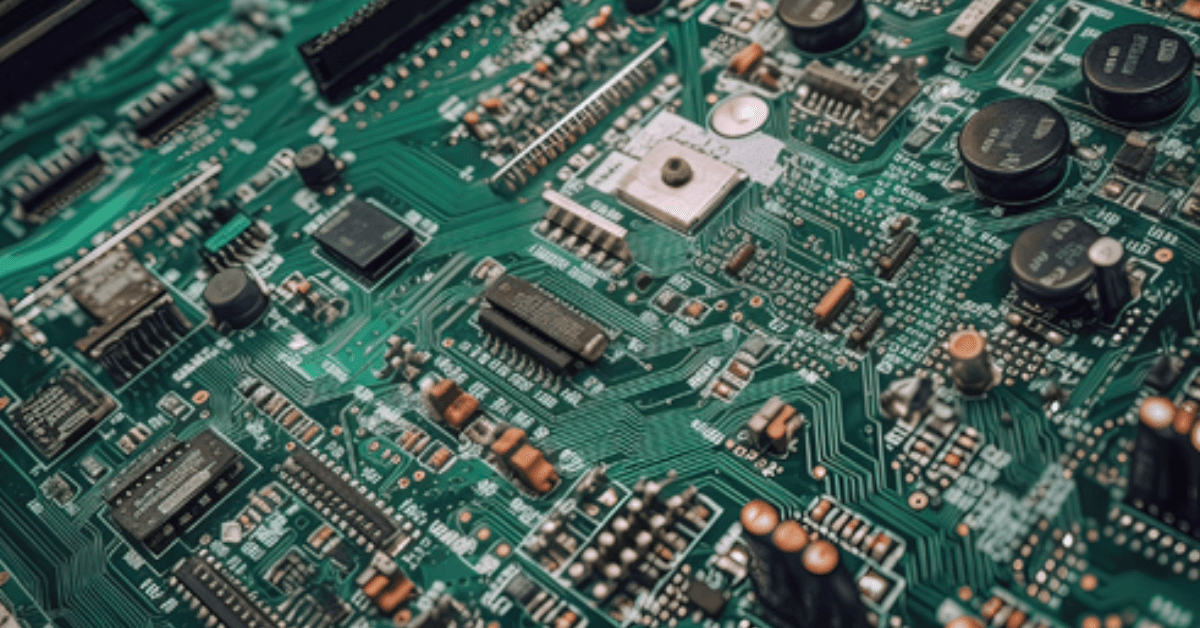In the demanding world of military applications, radar printed circuit boards (PCBs) must operate flawlessly under extreme conditions. From scorching deserts to freezing tundras, high humidity to corrosive salt spray, these PCBs face harsh environments that can degrade performance or cause failure. So, how do we protect them? The answer lies in conformal coating—a specialized protective layer that shields military radar PCBs from environmental threats. In this comprehensive guide, we’ll explore the importance of PCB conformal coating materials, dive into popular types like acrylic conformal coating, epoxy conformal coating, and silicone conformal coating, and explain their role in military PCB protection.
Why Conformal Coating is Critical for Military Radar PCBs
Military radar systems are the backbone of defense operations, detecting threats and guiding critical decisions. The PCBs within these systems handle complex signals and must maintain high reliability. Without proper protection, exposure to moisture, dust, extreme temperatures, and chemical contaminants can lead to corrosion, short circuits, or signal interference. Conformal coating acts as a barrier, ensuring operational integrity even in the harshest environments. For military applications, where failure is not an option, selecting the right coating material is vital for long-term performance and durability.

What is Conformal Coating and How Does it Work?
Conformal coating is a thin polymeric film applied to PCBs to protect them from environmental stressors. This coating "conforms" to the shape of the board and its components, creating a protective shield without interfering with functionality. It enhances dielectric resistance, preventing electrical shorts, and guards against moisture, dust, thermal shock, and chemical exposure. In military radar systems, where PCBs often operate in unpredictable conditions, conformal coatings are engineered to meet stringent standards for durability and reliability.
The coating process involves applying a liquid material—typically 30-210 micrometers thick, depending on the material and standards like IPC—that hardens into a protective layer. This layer must withstand temperature cycling (e.g., -55°C to 125°C for military specs) and resist vibration frequencies common in field operations. By doing so, it ensures that radar systems maintain signal accuracy and avoid costly downtime.
Key Challenges for Military Radar PCBs in Harsh Environments
Military radar PCBs face unique challenges that require robust protection. Here are the primary environmental factors at play:
- Extreme Temperatures: Radar systems may operate in deserts with temperatures exceeding 70°C or arctic zones below -40°C. These extremes can cause thermal expansion or contraction, stressing PCB components.
- Humidity and Moisture: High humidity or direct water exposure can lead to corrosion of metal traces and components, disrupting signal integrity.
- Salt Spray and Chemicals: Coastal or marine environments expose PCBs to salt spray, while industrial settings may involve chemical contaminants that degrade materials.
- Vibration and Shock: Military vehicles and aircraft subject PCBs to constant vibration (often 10-2000 Hz) and sudden shocks, risking mechanical failure.
- Dust and Particulate Contamination: Fine particles can settle on PCBs, causing shorts or interfering with heat dissipation.
Conformal coatings are designed to address these challenges, but not all materials offer the same level of protection. Let’s explore the most common PCB conformal coating materials used for military PCB protection.

Types of PCB Conformal Coating Materials for Military Applications
Choosing the right conformal coating material depends on the specific environmental challenges and operational requirements of military radar systems. Below, we break down the properties, advantages, and limitations of acrylic conformal coating, epoxy conformal coating, and silicone conformal coating.
1. Acrylic Conformal Coating
Overview: Acrylic coatings are one of the most widely used materials for PCB protection due to their ease of application and cost-effectiveness. They form a thin, flexible layer (typically 30-130 micrometers) that offers good moisture resistance and dielectric properties.
Advantages:
- Excellent protection against humidity and salt spray, making them suitable for marine radar systems.
- Easy to apply and rework, allowing for repairs without damaging the PCB.
- Good dielectric strength (often around 1000-1500 volts per mil), preventing electrical shorts.
Limitations:
- Limited resistance to high temperatures (typically up to 120°C), which may not suffice for extreme desert operations.
- Less effective against strong chemical exposure or prolonged vibration.
Best Use Case: Acrylic conformal coating is ideal for military radar PCBs in moderate environments with high humidity but lower thermal or mechanical stress.
2. Epoxy Conformal Coating
Overview: Epoxy coatings are two-part systems that create a hard, durable barrier (30-130 micrometers thick) after curing. They are known for their exceptional mechanical strength and chemical resistance.
Advantages:
- Superior protection against abrasion, vibration, and shock—perfect for radar systems in military vehicles or aircraft.
- High resistance to chemicals and solvents, ensuring reliability in industrial or contaminated environments.
- Excellent thermal stability, often withstanding temperatures up to 150°C or higher.
Limitations:
- Rigid nature can crack under thermal cycling if not formulated for flexibility.
- Difficult to rework or remove, complicating repairs.
Best Use Case: Epoxy conformal coating shines in applications where military radar PCBs face heavy mechanical stress and chemical exposure but don’t require frequent modifications.
3. Silicone Conformal Coating
Overview: Silicone coatings provide a soft, flexible layer (50-210 micrometers thick per IPC standards) that excels in extreme temperature ranges. They are highly adaptable to thermal expansion and contraction.
Advantages:
- Outstanding thermal resistance, operating effectively from -55°C to 200°C or more, ideal for desert and arctic deployments.
- Excellent flexibility, absorbing vibrations and shocks without cracking.
- Good moisture and humidity resistance for long-term reliability.
Limitations:
- Lower abrasion resistance compared to epoxy, making it less suitable for high-wear environments.
- Can be more challenging to apply evenly due to its viscosity.
Best Use Case: Silicone conformal coating is the go-to choice for military radar PCBs exposed to extreme temperature swings and moderate mechanical stress.

Factors to Consider When Choosing a Conformal Coating for Military PCB Protection
Selecting the right coating for military radar PCBs involves balancing environmental challenges, performance needs, and application constraints. Here are the key factors to evaluate:
- Operating Environment: Assess temperature ranges, humidity levels, and exposure to chemicals or salt spray. For instance, silicone is better for extreme cold, while epoxy suits chemical-heavy settings.
- Mechanical Stress: If the PCB will face constant vibration or shock, prioritize materials like epoxy or silicone with high durability.
- Thermal Cycling: Military specs often require coatings to handle rapid temperature changes (e.g., MIL-STD-810G standards). Test coatings for cracking or delamination under these conditions.
- Dielectric Requirements: Ensure the coating maintains signal integrity by providing adequate insulation. Acrylics often offer dielectric strengths of 1000 volts per mil or more, suitable for high-voltage radar circuits.
- Application and Rework: Consider ease of application (spray, dip, or brush) and whether rework is needed. Acrylics are easier to remove, while epoxies are more permanent.
By aligning the coating material with the specific demands of the radar system, you can maximize protection and longevity.
Application Methods for Conformal Coating on Military Radar PCBs
The effectiveness of a conformal coating depends not only on the material but also on how it’s applied. Common methods include:
- Brush Application: Manual and precise, ideal for small-scale or prototype PCBs but time-consuming for mass production.
- Spray Application: Efficient for covering large areas, often used with acrylic or silicone coatings. Requires masking to protect connectors.
- Dip Coating: Submerges the PCB for uniform coverage, suitable for high-volume production but may lead to excess material buildup.
- Selective Coating: Uses automated machines to apply coating only to specific areas, preserving functionality of connectors or test points.
For military applications, coatings must meet strict thickness guidelines (e.g., 30-130 micrometers for acrylics per IPC standards) to avoid impacting thermal dissipation or adding unnecessary weight. Proper curing—whether through air drying, heat, or UV exposure—is also critical to achieve optimal protection.

Standards and Testing for Military PCB Conformal Coatings
Military radar PCBs must adhere to rigorous standards to ensure reliability in the field. Common specifications include:
- MIL-STD-810G: Tests environmental durability, including temperature, humidity, salt fog, and vibration resistance.
- IPC-CC-830: Defines qualification and performance requirements for conformal coatings, ensuring consistent quality.
- MIL-I-46058C: A military standard for insulating compounds, often referenced for coating dielectric properties.
Testing methods evaluate coating performance under simulated harsh conditions. For instance, thermal cycling tests expose PCBs to temperature swings (e.g., -55°C to 125°C for 100 cycles) to check for cracking. Salt spray tests (per MIL-STD-810G Method 509) assess corrosion resistance over 96 hours or more. Only coatings that pass these stringent tests are deemed suitable for military PCB protection.
Benefits of Conformal Coating for Military Radar Systems
Investing in the right conformal coating yields significant advantages for military radar PCBs:
- Enhanced Reliability: Coatings prevent failures caused by moisture or contamination, ensuring consistent radar performance.
- Extended Lifespan: Protection from corrosion and thermal stress reduces wear, lowering replacement costs.
- Reduced Maintenance: Durable coatings minimize the need for frequent repairs, critical in remote or active combat zones.
- Signal Integrity: High dielectric strength preserves the accuracy of radar signals, vital for threat detection.
These benefits translate to operational success, where every second of uptime can make a difference.
Conclusion: Safeguarding Military Radar PCBs with the Right Conformal Coating
In the high-stakes arena of military operations, radar PCBs must perform without fail, no matter the environment. Conformal coatings provide the essential protection needed to combat moisture, extreme temperatures, vibration, and chemical exposure. By understanding the strengths of PCB conformal coating materials like acrylic conformal coating, epoxy conformal coating, and silicone conformal coating, you can select the best solution for military PCB protection. Whether facing the heat of a desert battlefield or the corrosive spray of a naval mission, the right coating ensures your radar systems remain operational and reliable.
At ALLPCB, we’re committed to supporting the defense industry with advanced PCB solutions tailored to withstand the toughest conditions. With the proper conformal coating, your military radar systems can achieve unmatched durability and performance, safeguarding critical missions around the globe.

 ALLPCB
ALLPCB







